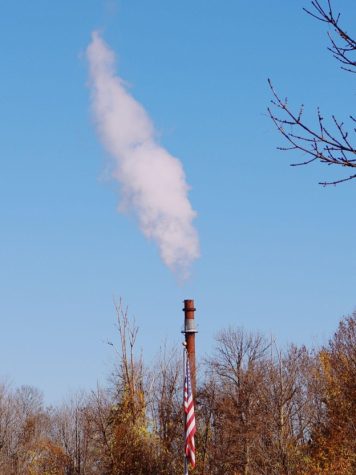Cost of heating is on the rise in New Hampshire with winter right around the corner.
November 30, 2022
DURHAM – People across New Hampshire are beginning to fear how they’ll pay for heating this winter as prices skyrocket. Unitil, the primary source of gas in the Southeastern region of New Hampshire known as the Seacoast, announced that all prices are set to increase by 77% in December.
According to Energy Sage, the average home in NH costs about $220 per month to heat. With the increased pricing, the average home heating bill in the Seacoast will rise to about $389 per month. This is a significant increase especially during the months where heat is needed the most in peoples homes.

Lower income families, especially families that rent, are set to be disproportionately affected. Dan Furman, a resident in Dover, NH, is worried about the working class.
“Especially with many, many New Hampshire people that are blue collar workers… They took a huge hit in their wallet when we stopped being energy independent.”
Furman said he’s looking at his electricity bill tripling this winter.
Tyler Stevens, a resident in Durham, NH is concerned for his mother going into the winter months. Stevens said that his mother has almost always used wood to heat her home, a much cheaper alternative to heating with oil.
“She is moving to a house without any kind of wood system, and has never paid for heat other than typical wood…and it’s probably going to triple if not more for her this year, and she’s on a fixed income,” he said.
What is New Hampshire doing to help?
According to the National Energy Assistance Directors Association (NEADA), all fuels nationwide have seen a 17.2% price increase in the past year alone. Mark Wolfe, executive director of the NEADA, emphasized how this will greatly affect lower income houses and families and will eventually force them to make difficult decisions between food and heat. Wolfe also added that congress luckily provided an additional $1 billion to the Low Income Home Energy Assistance Program (LIHEAP) in hopes of helping more families in need this winter.
New Hampshire residents are also disappointed with the state’s lack of preparation for the upcoming winter. According to Dover resident Sebastion Brown, the Strafford county warming shelter is only set to be open for “extreme weather conditions.” The specifications of these weather conditions, however, are yet to be distinguished by city officials and Brown worries that communities in need will be shelterless through rough temperatures.
“I haven’t really been able to get an idea for an understanding of what constitutes extreme weather. Nobody seems to have that definition in place,” said Brown. “I’d like to see it open for the full season”
Towns and cities like Manchester have official bans set in place preventing any unhoused persons from camping on city owned streets. With the prices of rent skyrocketing and oil and gas hitting an all time high, many residents are forced to struggle and make sacrifices just to stay afloat.
Democrat Jessica LaMontagne ran unopposed for State Representative in the recent midterm elections.
“New Hampshire could have done a lot more to move towards more renewables. We are way behind every New England state,” she said.
LaMontagne stated that about 30% of New Hampshire residents rent their homes. “I would like to see more incentives for landlords to make the houses more energy efficient.”
Moving to renewable energy can be cost effective, but why is New Hampshire using so few renewables? Well, it is not as simple as just building infrastructure for sustainable alternatives. New England is a hard place to build anything and this includes renewable options. Switching to renewables is only an option if you are a homeowner, and since nearly 30% of New Hampshire residents are renting, this is not a solution that everyone is going to be able to follow through with.
“Let’s just remember that this isn’t about your individual choice. It’s about creating a system, a policy framework under which everyone’s incentives are aligned with doing the right thing,” said Sam Evans-Brown, executive director of Clean Energy NH.
“I am not sure if it is an issue that can be immediately addressed by local officials,” said LaMontagne. For instance, the Community Action Partnership of Strafford County is responsible for the Low-Income Home Energy Program, also known as the Fuel Assistance Program (FAP). This program is an allocation of federal funds that is issued on a needs basis, determined by factors such as household size, income and individualized energy costs.
Until the issue is solved, assistance groups like the C.A.P. are stepping in to fill the gaps that local legislation lacks.





























